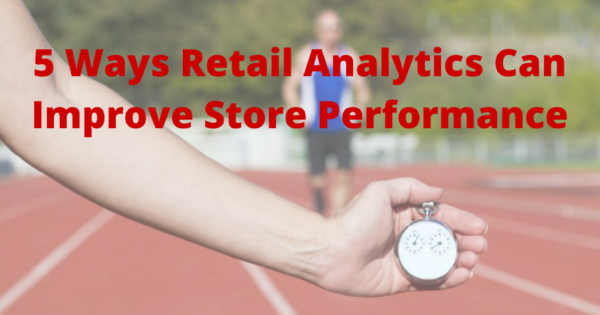Do you offer consumer credit? Has your store recently lost customers after becoming the victim of fraud that caused a drop in consumer trust?
In today’s post you will learn 2 ways that retail analytics can minimize risks like fraud and 3 ways to use them to improve store performance. While many people focus on retail analytics as a tool to evaluate promotions, decide ideal pricing, determine product mix, and optimize store layout, it is also very useful for minimizing risk.
[xyz-ihs snippet=”TOFU2-Retail-Technology-button”]
Beyond Retail Promotion Analysis: How Retail Analytics Minimizes Risk
Retail analytics captures multiple data points to help drive performance improvement across store processes. Two areas that retail analytics has proven beneficial for improving performance by minimizing risk are fraud analytics and credit risk analysis.
Fraud Analytics
Do you suspect fraudulent activity is occurring at your business? There’s a good chance you are right!
Shrink, comprised of shoplifting, employee or supplier fraud and administrative errors, cost the global retail industry more than $128 billion last year, $42 billion in the US alone, according to the latest Global Retail Theft Barometer This represents 1.29 percent of retail sales, on average. – BusinessWire.com
Today, retailers routinely find themselves battling attempted manipulation of their financial statements and POS transactions, collusion among vendors, shoplifting and refund fraud, plus a host of often elaborate schemes involving salaries, wages, and employee theft. – Deloitte
If you have reason to suspect that there is fraudulent activity going on in your enterprise, you must pinpoint the cause and stop it immediately! Performing a manual search is usually no easy task due to the large amount of available information. To successfully monitor for fraud, use current analytics technology to improve fraud detection and protect your margins.
Fraud analytics identifies both fraud risks as well as current behaviors that are resulting in losses. It does this through:
- Business rules based on both industry standards and specified for the business through past learning.
- Anomaly detection that analyzes patterns to alert your business when something happens that shouldn’t without false alarms or false negatives. Anomaly detection is performed by comparing present data to a model of what is considered normal.
- Predictive analytics which analyzes and identifies risky behavior.
A solid fraud analytics program will quickly identify and stop improper behavior while also identifying new behaviors and risks that have not occurred before.
While not exactly what you want to deal with, finding the source of the fraudulent activity can be one of the most rewarding experiences of your life. Being able to share your experience and document it with your peers will bring about a newfound sense of appreciation for your enterprise.
Credit Risk Analysis
Credit risk occurs whenever a borrower plans on using their future income as a means to pay the debt they have right now. Retail store owners who directly offer consumer credit must have steps in place to ensure they are minimizing credit risks. Retail analytics can help with:
- Risk identification
- Risk measurement
- Establishing guidelines for approval
- Reporting and monitoring for changes that might require changes in credit policy.
The objective of credit risk analysis is to look at the borrower and assign a risk rating. The risk rating is derived by estimating the probability of default by the borrower at a given confidence level over a given period of time, and by estimating the amount of loss that the business would suffer in the event of default.
Common Retail Analytics Uses
Now that risks are minimized what are 3 of the more commonly utilized ways to use retail analytics to improve performance and revenue?
Marketing Mix Modeling
Marketing mix modeling (MMA) is a term that is widely used for the art of using statistical analysis of sales to perform retail promotion analysis to help optimize the promotional tactics being used along with the advertising mix in regards to sales profits or revenue.
MMA provides clients continuous, actionable insights and a value proposition into how their marketing performance can be optimized for the future based upon a rich historical perspective of marketing and trade promotion performance, pricing actions, economic indicators, customer attitudinal insights, competitive landscapes and other business conditions. – Marketing Management Analytics
Retail Promotion Analysis and Price Modeling
With promotion and price modeling, a few questions are asked:
- What makes the consumer want to buy the product in the first place?
- How much can the consumer afford to spend?
- How much are they willing to spend?
- Where do they make their pricing decisions?
- How do consumers react when weighing the changes in product count and sizes? Does that impact the value?
By answering these questions, you can determine whether your pricing is in line with what consumers are looking to spend or if you need to readjust your business model.
Web Analytics
With Web analytics, you measure, collect, analyze and report data for the sole purpose of understanding and optimizing Internet usage. It isn’t all about measuring the amount of traffic websites get, but rather more for market research to help determine how effective a website is.
Web analytics, when combined with in-store retail analytics provide a rich set of customer insights and allow for strong cross-promotion campaigns.
[Tweet “5 Ways Retail Analytics Can Improve Store Performance #retail @alerttechinc”]
[xyz-ihs snippet=”TOFU2-Retail-Technology-button”]
Conclusion
By using the five retail analytics tools above, you can minimize risks and maximize performance. Employing retail analytics technology can make a huge difference in your bottom line.
To learn even more about retail analytics and the benefits to your business, download our whitepaper, “In-Store Retail Analytics: Beyond People Counting”.
[xyz-ihs snippet=”TOFU2-Retail-Analytics”]

